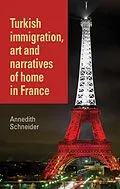Turkish immigration, art and narratives of home in France argues for a cultural, rather than a sociological or economic, approach to understanding how immigrants become part of their new country. In contrast to the language of integration or assimilation which evaluates an immigrant's success in relation to a static endpoint (e.g. integrated or not), 'settling' is a more useful metaphor. Immigrants and their descendants are not definitively 'settled', but rather engage in an ongoing process of adaptation. In order to understand this process of settling, it is important to pay particular attention to immigrants not only as consumers, but also as producers of culture, since artistic production provides a unique and nuanced perspective on immigrants' sense of home and belonging, especially within the multi-generational process of settling. In order to anchor these larger theoretical questions in actual experience, this book looks at music, theatre and literature by artists of Turkish immigrant origin in France.
Autorentext
Annedith Schneider is Research Associate at the Center for International and European Studies at Kadir Has University
Klappentext
Turkish immigration, art and narratives of home in France makes the case for a cultural - rather than sociological or economic - approach to understanding how immigrants become part of their new country. Arguing that the language used to talk about immigration determines the kinds of things that can be said about it, the book rejects 'integration' and 'assimilation' in favour of 'settling', an open-ended concept that makes it possible to see how immigrants and their descendants engage in the on-going process of adaptation. In order to understand settling, it is important to pay particular attention to immigrants not only as consumers but also as producers of culture. Artistic production provides a unique perspective on immigrants' sense of home and belonging, especially within the multi-generational process of settling. Anchoring theoretical questions in actual experience, the book combines artist interviews and textual analysis of lyrics, scripts and novels with the sociological and historical context of migration in France and Turkey in order to provide a more nuanced picture of what it means to be part of both the culture of one's immigrant parents and the culture in which one grew up. Turkish immigration, art and narratives of home in France will be of interest to advanced undergraduates and graduate students in French Studies, as well as providing a new approach to migration for students of migration studies, public policy and sociology.
Inhalt
Introduction: settling in1. Politics and belonging in the music of Turkish-French rapper C-it2. Home and back again: texts and contexts in the Kebab Show theatre troupe3. Home is where the laughter is: humour and narrative control on stage with Ayse Sahin4. A Turk in Paris: Karagöz's cultural and linguistic migration5. The right to (offer) hospitality in Sema Kiliçkaya's Le Chant des tourterellesConclusion: settling inIndex
